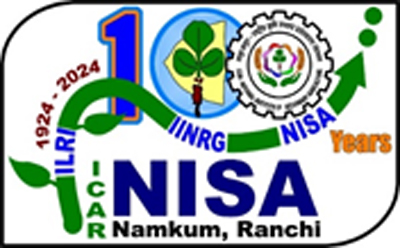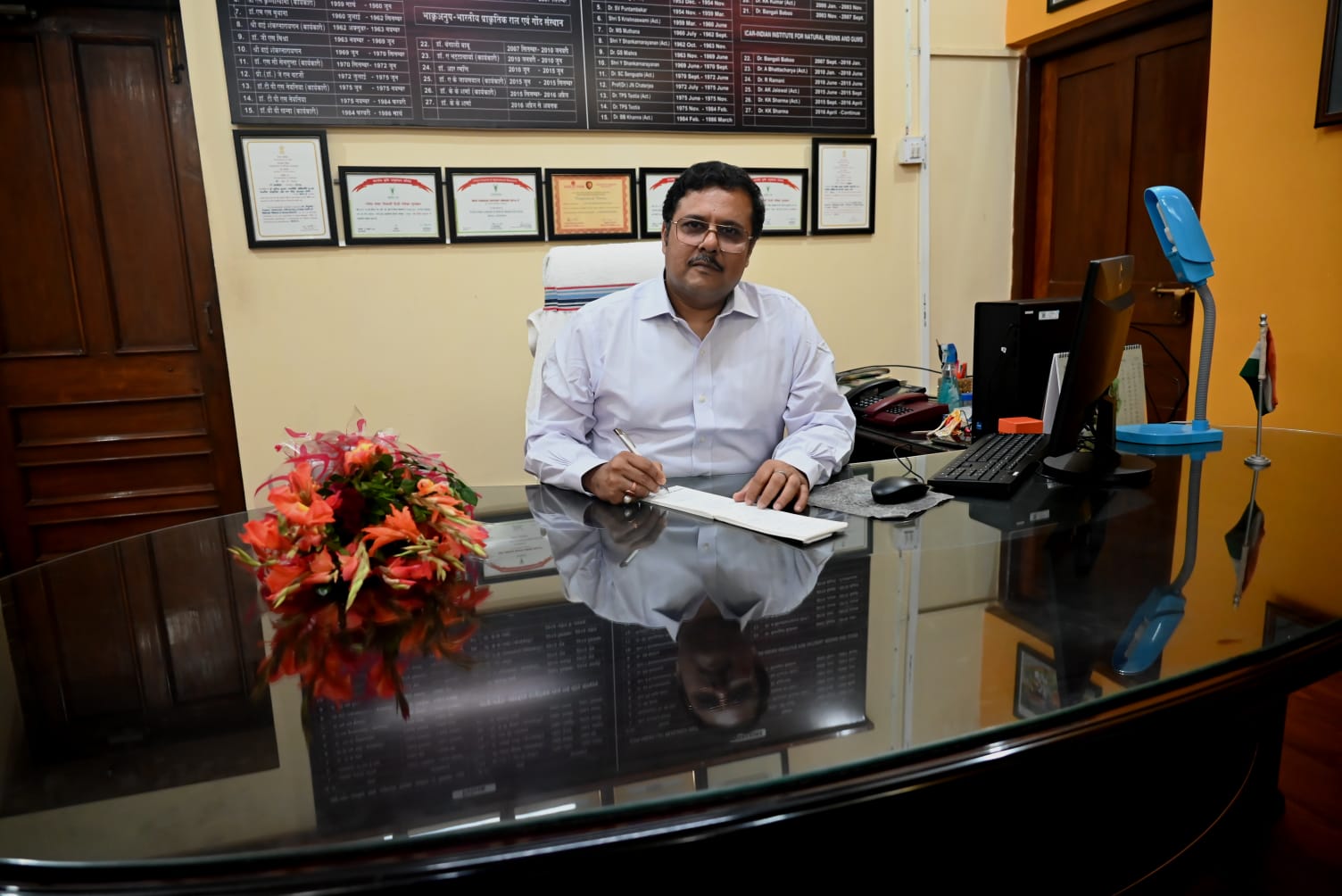ICAR-NISA
झारखंड राज्य के रांची के नामकुम में स्थित आईसीएआर-राष्ट्रीय माध्यमिक कृषि संस्थान (एनआईएसए), जिसे पहले भारतीय प्राकृतिक राल और गोंद संस्थान के नाम से जाना जाता था, भारतीय कृषि अनुसंधान परिषद (आईसीएआर) की एक इकाई है। सितंबर 2022 में माध्यमिक कृषि के सभी पहलुओं की सेवा करने के लिए अधिदेश में बदलाव के साथ आईसीएआर-एनआईएसए का नाम बदलकर आईसीएआर-राष्ट्रीय माध्यमिक कृषि संस्थान कर दिया गया। संस्थान को पहले भारतीय लाख अनुसंधान संस्थान के नाम से जाना जाता था, जिसकी स्थापना 20 सितंबर, 1924 को हुई थी और इस प्रकार यह आईसीएआर प्रणाली के भीतर सबसे पुराने संस्थानों में से एक है, जिसने राष्ट्र को 99 साल की उपयोगी सेवाएं दी हैं।
ICAR- National Institute of Secondary Agriculture (NISA), formerly, Indian Institute of Natural Resins and Gums, located at Namkum, Ranchi, in the Jharkhand state, is a unit of Indian Council of Agricultural Research (ICAR). The ICAR-NISA was renamed as ICAR-National Institute of Secondary Agriculture, in September 2022, with a change in the mandate to serve all the aspects of secondary agriculture. The Institute was earlier known as Indian Lac Research Institute, established in September 20, 1924, and thus, one of the oldest institutions within the ICAR system, having completed 99 years of fruitful services to the Nation.
Establishment
यह संस्थान लाख के उत्पादन, प्रसंस्करण, उत्पाद विकास, प्रौद्योगिकी प्रसार, सूचना संग्रह और राष्ट्रीय एवं अंतर्राष्ट्रीय सहयोग जैसे सभी पहलुओं पर अनुसंधान एवं विकास तथा परामर्श सहायता प्रदान करने के लिए राष्ट्रीय स्तर पर नोडल संस्थान रहा है। संस्थान किसानों, मास्टर प्रशिक्षकों, छात्रों, राज्य स्तरीय विभागों, उद्यमियों और स्टार्टअप्स के लिए नियमित प्रशिक्षण भी आयोजित करता है। इसने लाख के सर्वांगीण विकास में महत्वपूर्ण योगदान दिया है, साथ ही उत्पादन, स्थापित प्रसंस्करण क्षमता और निर्यात में भारत की अग्रणी स्थिति को बनाए रखा है।
The institute had been the nodal Institute at national level for providing research & development and consultancy support to all aspects of lac such as production, processing, product development, technology dissemination, information repository and national and international cooperation. The institute also conducts regular trainings for farmers, master trainers, students, state line departments, entrepreneurs and startups. It has immensely contributed towards all round development of lac besides maintaining India`s leadership in production, installed processing capacity and export.
Research
National Institute of Secondary Agriculture (NISA) comprises of four divisions and one unit namely Agri-Bioresources Augmentation Division (ABA), Downstream Agro-Processing Division (DAP), Agriculture Structure & Process Engineering Division (AS&PE) Automation and Plant Engineering Division (APE) and Agri-Business Development Unit (ABD).

Services
NISA has several facilities like Biotechnology lab. The laboratory is well equipped with instruments for molecular and plant tissue culture work and provides need based training to scientific staffs and regular project training for post graduate and undergraduate students.

Technologies
The institute has developed several worthwhile technologies for production, processing & value addition of lac and other natural resins and gums to cater the evolving needs of different stakeholders. The institute propagate these technologies through Agribusiness Development Unit.

Divisions
The institute operates and accomplishes its mandate through four divisions namely Agri-bioresources Augmentation (ABA) Division, Agricultural Structures and Process Engineering (ASPE) Division, Downstream Agro Processing (DAP) Division and Automation and Plant Engineering (APE) Division.

100 years of service to the nation
The journey of National Institute of Secondary Agriculture (NISA) started long ago when lac in the form of lac-dye was used in medicine, dyeing of fabrics and cosmetic purposes in ancient times







